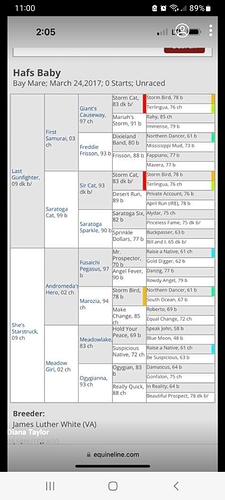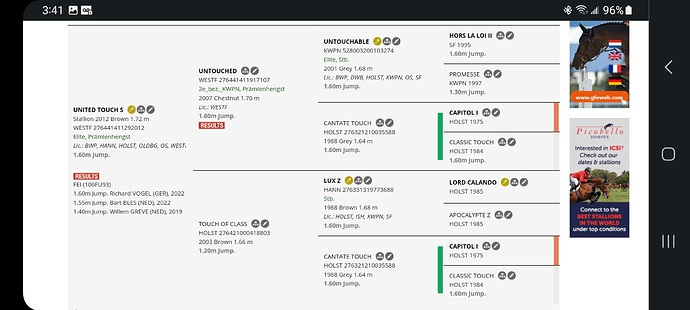Worth noting that line breeding generally refers to no common ancestors 5 generations and beyond, and inbreeding is common ancestry closer in the pedigree such as within the first 4 generations.
That said, TBs have an average inbreeding coefficient of roughly 12 percent which is largely why the TB is so identifiable and prepotent. But obviously, despite the average inbreeding coefficient, this guarantees no certain genetic tendencies as soundness and longevity are hugely variant amongst TBs despite common ancestry within the closed breed.
It can be said that outcrossing can produce hardy offspring, similar to mixed breed dogs being often less problematic than purebreds, but it is a crap shoot for breeding certain characteristics and breeding them reliably. The lack of homozygous traits lends to unpredictable results in offspring and characteristics one wishes to pass down, such as an excellent jump, dressage movement, trainability, etc., become far more difficult to control. That is why many stallions without any line breeding in their pedigrees fail as stallions - they do not consistently pass on desired homozygous characteristics to their offspring.
This is why there should be a nice balance within breeding - line breeding certain characteristics to increase genetic probability and control while maintaining enough distance in the first generations. Line breeding is not a problem when breeding stock is rigorously screened and when negative genetic traits are avoided.



